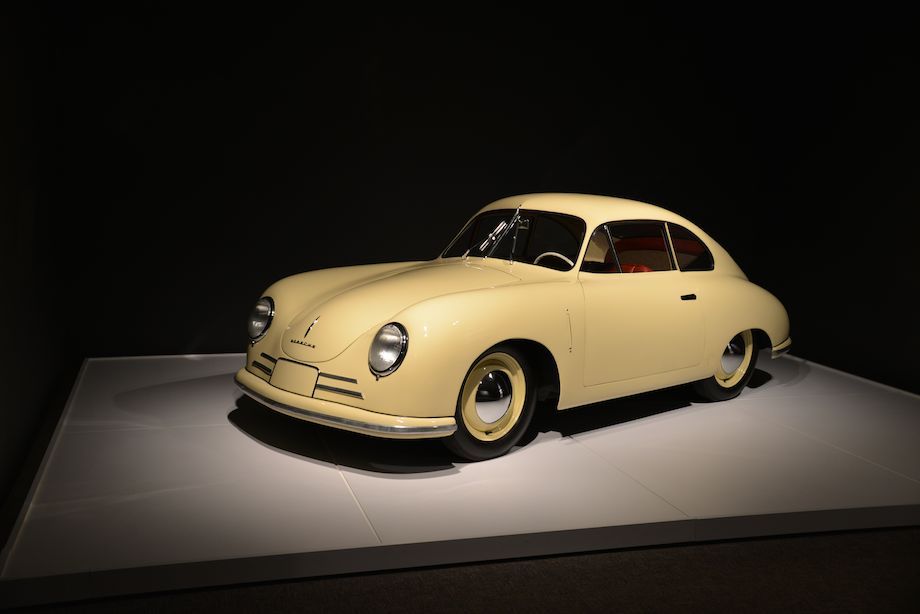1949 Porsche Type 356 Gmünd

The descriptions of the Classic Cars in the Directory were partly generated or supplemented with the help of artificial intelligence (AI). The content may occasionally not always be entirely accurate or factually correct despite careful checking.
The Porsche Type 356 Gmünd 1949 is an iconic sports car that is highly regarded for its speed and performance. It was designed and developed by Ferdinand Porsche, who is widely considered as one of the greatest automotive engineers of all time. The car was built from 1949 to 1951, and it marked the beginning of a new era for Porsche, as it was their first production car.
The Porsche Type 356 Gmünd 1949 is a two-seater, rear-engine, rear-wheel drive sports car that is based on a lightweight and highly aerodynamic chassis. The car features a low-slung body with a sleek and smooth design that is highly recognizable. The car’s svelte lines are complemented by its high-quality craftsmanship, with each car being hand-built to the highest standards.
The car is powered by a 1.1-liter horizontally opposed four-cylinder engine, which generates a maximum of 40 horsepower at 4,000 rpm. The engine is mated to a four-speed manual gearbox, which is highly responsive and easy to operate. The car is capable of reaching a top speed of 108 miles per hour, and it can accelerate from 0 to 60 miles per hour in just 14 seconds.
The Porsche Type 356 Gmünd 1949 features an independent suspension system that is highly advanced for its time. The car’s front suspension is a torsion bar design that is highly effective at absorbing road shocks and providing a smooth ride. The car’s rear suspension is also a torsion bar design, which is highly effective at keeping the car’s rear wheels firmly planted on the ground.
The Porsche Type 356 Gmünd 1949 is also highly advanced when it comes to braking. The car is equipped with four-wheel hydraulic drum brakes, which are highly effective at stopping the car in a short distance. The car’s steering is also highly responsive, with a direct and precise feel that is highly appreciated by sports car enthusiasts.
In conclusion, the Porsche Type 356 Gmünd 1949 is a highly advanced and sophisticated sports car, which is highly appreciated by automotive enthusiasts for its speed, performance, and high-quality craftsmanship. The car’s technical specifications are highly advanced for its time, which is a testament to Ferdinand Porsche’s genius and vision. The Porsche Type 356 Gmünd 1949 is truly a masterpiece of automotive engineering and design that has stood the test of time.
Milestones
- Concept development and initial design of the Porsche Type 356 Gmünd in 1947 - Construction of the first prototype in Gmünd, Austria in 1948 - Fine-tuning and testing of the prototype throughout 1948 and early 1949 - Introduction of the Porsche Type 356 Gmünd to the public at the Geneva Motor Show in March 1949 - Marketing and sales efforts to build interest and momentum for the new model throughout 1949 - Production of a limited number of vehicles in Gmünd, Austria throughout 1949 and into 1950 - Expansion of production to Stuttgart, Germany in 1950 as demand for the Type 356 increased - Continued development and refinement of the Type 356 throughout the early 1950s to address design and performance issues - Launch of the Type 356 A in 1955, which marked a major evolution and refinement of the initial model. - Famed Speedster model of the 356 series debuts in 1954.Technical
- Produced in Gmünd, Austria in 1949 - Rear-wheel drive - Air-cooled, 4-cylinder, flat engine - Total displacement of 1,086 cc - Maximum power output of 40 horsepower - Maximum torque of 78 Nm - 4-speed manual transmission - Independent suspension - Front suspension: Torsion bar with trailing arms - Rear suspension: Swing axle with transverse torsion bars - Drum brakes all around - Overall length: 3,650 mm - Width: 1,580 mm - Height: 1,300 mm - Wheelbase: 2,100 mm - Curb weight: 585 kg - Top speed: 135 km/h (84 mph) - Acceleration 0-100 km/h (0-62 mph): 16.5 seconds - Fuel consumption: 9.5 L/100 km (29.4 mpg)